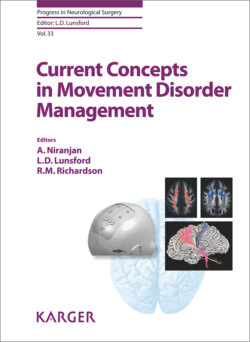Читать книгу Current Concepts in Movement Disorder Management - Группа авторов - Страница 68
Essential Tremor
ОглавлениеEssential tremor (ET) is one of the most common movement disorders, presenting an overall estimated prevalence ranging from 0.9 to 2.2%, even higher among people over 65 years of age (4.6%) [16]. It is characterized by a 8–12 Hz postural and kinetic tremor involving the arms and less commonly the head, lower limbs, and voice, frequently accompanied by a family history of a similar tremor. However, ET is a heterogeneous disorder and there is little agreement among specialists regarding both clinical definition and diagnostic criteria. Although benign in terms of its effect on life expectancy, it often causes embarrassment and, in a smaller percentage of patients, also serious disability [15]. Moreover, symptoms are typically progressive and potentially disabling, often forcing patients to change job or seek early retirement [16].
The treatment is primarily based on pharmacological agents, although surgical intervention may be an option in the most disabling cases. Pharmacotherapy may be used to improve function or reduce the social embarrassment associated with ET, but treatment should be tailored to the patient’s level of disability. Treatment is usually started with one medication, but in case of partial benefit with the maximum tolerated dosage, additional agents may be useful. Medical management of ET include beta-blockers, anticonvulsants and benzodiazepines, neuroleptics, and botulin toxin type A (BTXA) injections [18–20].
